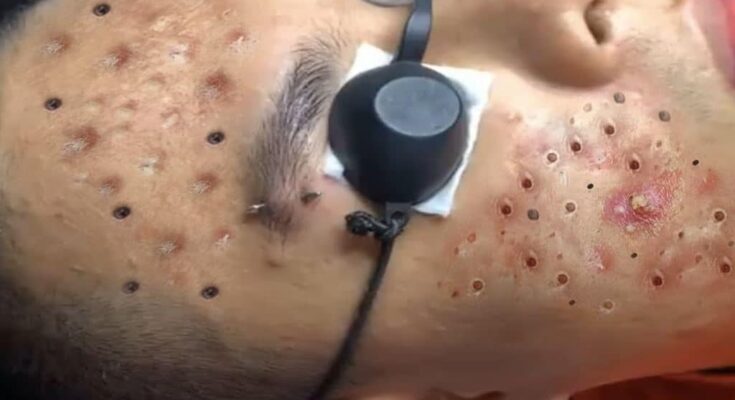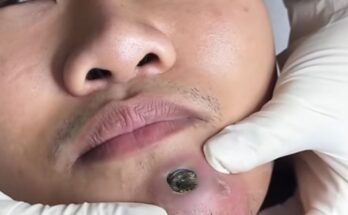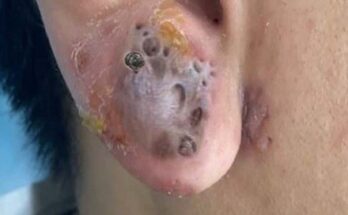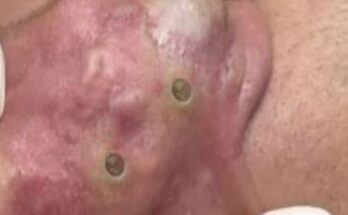Even when the blemish itself disappears, the memory of it can linger in the form of dark spots, uneven skin tone, or small textural changes.
The good news is that with the right knowledge, patience, and care, post-acne marks can fade and the skin can regain a smoother, more radiant look. Understanding the difference between post-acne marks and acne scars is an important first step. Marks are typically flat areas of discoloration, sometimes red, brown, or slightly purple depending on skin tone. They occur when the skin produces too much or too little pigment as it heals from inflammation. True acne scars, on the other hand, involve changes to the texture of the skin, such as depressions or raised areas. While both can improve over time, the approach to treating them may differ. This article focuses mainly on marks, which often respond well to both at-home care and professional treatments. One of the most widely recommended approaches to improving post-acne marks is the use of topical treatments that encourage skin renewal. Ingredients such as retinoids, C, and gentle acids like glycolic acid are well known in dermatology for their ability to support a more even skin tone. Retinoids, for example, can help speed up the turnover of skin cells, gradually bringing fresher, healthier skin to the surface. C has been studied for its antioxidant properties and is often used to brighten areas of hyperpigmentation. Gentle exfoliating acids, when used correctly, can also help lift away dull, uneven layers of skin. Consistency is essential with all of these treatments. It usually takes several weeks to see visible improvements, and using them alongside daily sun protection enhances their effectiveness. Speaking of sun protection, plays a central role in managing post-acne marks. Ultraviolet exposure can darken marks and make them linger longer. A broad-spectrum sunscreen used every day helps prevent this and protects the skin from further damage. Many dermatologists emphasize sunscreen as one of the most important products for anyone dealing with discoloration. In fact, even the most advanced treatments will have limited results without sun protection, since the skin remains vulnerable to new pigmentation. Choosing a sunscreen that feels comfortable for daily wear makes it easier to stick to this habit, whether it is a lightweight lotion, a hydrating cream, or a tinted formula. In addition to topical products, professional treatments can provide another path to improvement, especially for more stubborn marks. Dermatology clinics often offer chemical peels, laser therapy, or microneedling. Chemical peels work by carefully removing the outermost layer of skin to reveal a fresher surface beneath. Depending on the strength of the peel, results can vary from a mild refresh to a more dramatic improvement in pigmentation. Laser therapy, particularly those designed for pigment correction, can target darker areas and encourage them to fade. Microneedling uses very fine needles to stimulate collagen production and can be effective for both marks and mild scarring. These treatments are usually performed in a series of sessions for best results, and they should be done by trained professionals to ensure safety.

For people who prefer more natural approaches, patience and lifestyle also play a role. Eating a balanced diet, staying hydrated, and maintaining overall skin health contribute to the body’s ability to repair itself. While food alone cannot erase post-acne marks, a diet rich in fruits, vegetables, and antioxidants supports skin resilience. Likewise, gentle skincare routines that avoid harsh scrubbing or picking at the skin can minimize further irritation and help marks fade more smoothly. The skin has an incredible ability to heal itself, but it needs a calm and supportive environment to do so. Another helpful aspect of treatment is setting realistic expectations. Post-acne marks rarely vanish overnight. Instead, they often fade gradually over several months. Some may resolve fully, while others may linger faintly. For many people, combining home care with occasional professional treatments strikes the right balance between noticeable improvement and practicality. Keeping track of progress with photos taken every few weeks can also be encouraging, since daily changes are often too subtle to notice in the mirror. The emotional side of post-acne marks is also worth mentioning. Many people feel frustrated when their breakouts are gone but the marks remain. It can feel like an unfair reminder of something they worked hard to overcome. Finding a treatment plan that fits your lifestyle and skin type helps bring a sense of control back into the process. Sometimes, even small improvements can boost confidence and reduce stress. Remembering that skin health is a journey, and not a race, can make the process less discouraging. One point that cannot be overstated is the importance of personalized care. While many products and treatments are widely available, not every approach works equally for everyone. Skin type, sensitivity, and the specific nature of the marks all influence outcomes. Consulting with a dermatologist can save time and help avoid trial-and-error frustration. Dermatologists can also recommend prescription options if over-the-counter solutions are not enough. Having professional guidance ensures treatments are safe and suited to individual needs. It is also wise to be cautious of quick fixes or products that promise overnight transformations. Many of these claims are exaggerated and can lead to disappointment. In some cases, harsh treatments can even irritate the skin and make marks worse. Sticking to well-researched ingredients and treatments is safer and more reliable in the long run. The journey toward clearer skin is often about steady, consistent care rather than dramatic shortcuts. Looking ahead, research in dermatology continues to bring new options for addressing post-acne marks. Advances in laser technology, topical formulations, and regenerative treatments are expanding the tools available. This means that people who struggle with discoloration today may have even more effective and gentle choices in the future. Staying informed and open to professional advice helps ensure the best use of these emerging treatments. In summary, the best treatments for post-acne marks often involve a combination of consistent at-home care, sun protection, and professional procedures when needed. Topical ingredients like retinoids, C, and gentle exfoliating acids can gradually improve discoloration, while is essential to prevent marks from worsening. Professional options such as lasers, and microneedling provide additional support for more persistent marks. Lifestyle habits and patience also contribute to the skin’s natural ability to heal. Perhaps most importantly, approaching the process with realistic expectations and professional guidance leads to safer and more satisfying results. Post-acne marks may feel like a lingering chapter after breakouts, but they do not have to define your skin. With time, care, and the right strategies, they can fade, allowing healthy, radiant skin to shine through once again.
Buy vitamins and supplements



